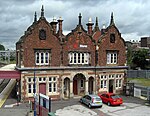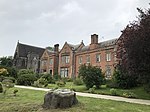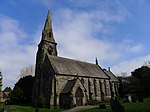Stone Priory
1135 establishments in England1537 disestablishments in England7th-century establishments in EnglandAnglo-Saxon monastic housesAugustinian monasteries in England ... and 4 more
Christian monasteries established in the 12th centuryInfobox religious building with unknown affiliationMonasteries in StaffordshireStone, Staffordshire

Stone Priory was a priory founded at Stone in Staffordshire, England, in about 670 AD. The priory's church was dedicated to Saint Mary and Saint Wulfad, a local seventh-century martyr and supposedly a son of King Wulfhere of Mercia, who ruled from 658 until his death in 675. The mid-15th century Rimed Chronicle of Stone Priory, found at the Priory at the Dissolution of the Monasteries, records the founding legend and the names of the Stafford family patrons up to 1403, and the places of their burials.
Excerpt from the Wikipedia article Stone Priory (License: CC BY-SA 3.0, Authors, Images).Stone Priory
Lichfield Street,
Geographical coordinates (GPS) Address Nearby Places Show on map
Geographical coordinates (GPS)
| Latitude | Longitude |
|---|---|
| N 52.901 ° | E -2.144 ° |
Address
Lichfield Street
Lichfield Street
ST15 8BB , Oultoncross
England, United Kingdom
Open on Google Maps







